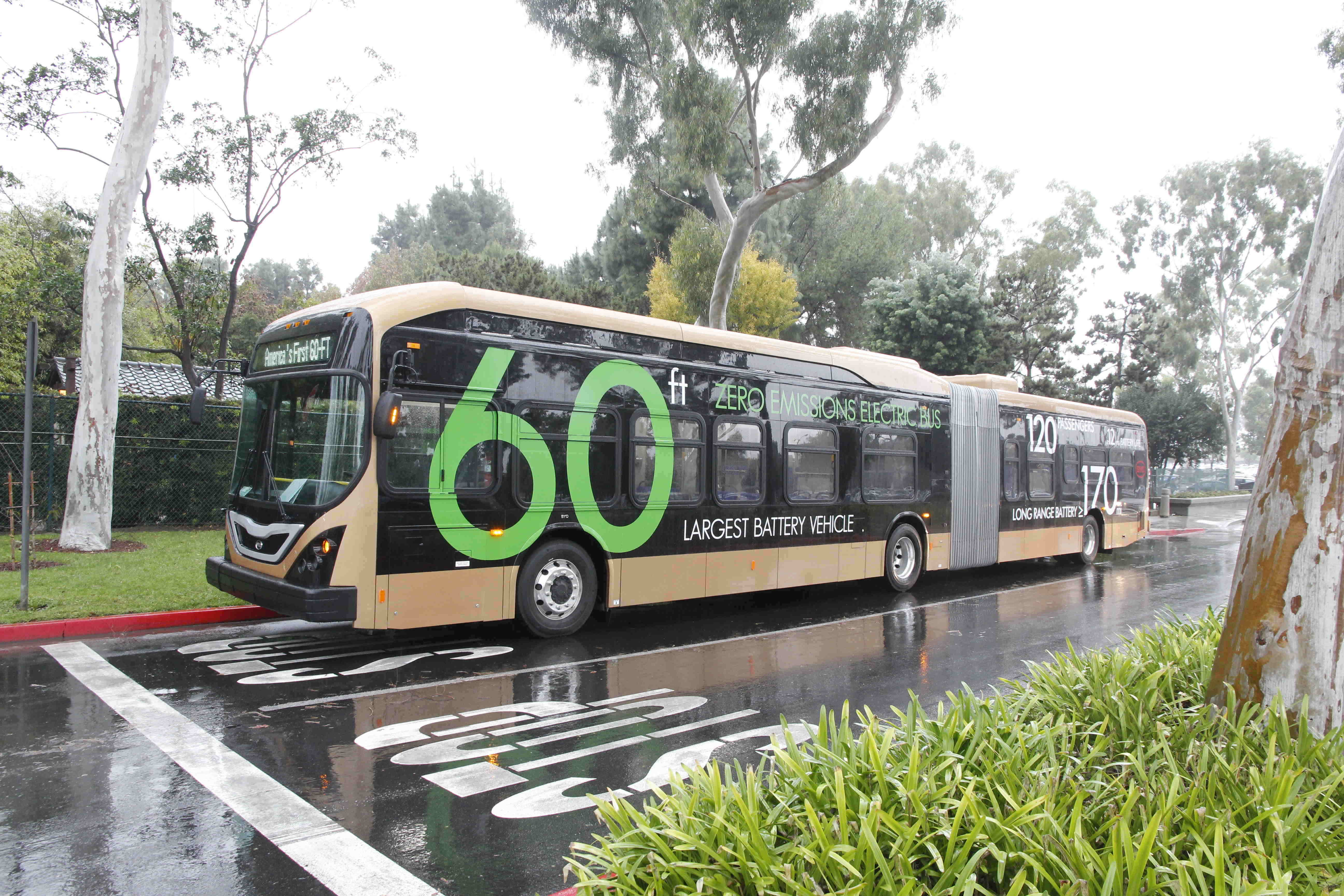1. We surpassed 1 million EVs on U.S. roads. Vehicles with little to no tailpipe emissions have entered the mainstream -- bringing major benefits to our climate and wallets. In the fall, we reached 1 million electric vehicles (EVs) in the U.S., with EV sales expected to grow at least 70 percent in 2018 over 2017.
2. California will require all transit buses to be electric by 2040. More than 13,000 transit buses run in the Golden State, mostly powered by diesel or methane gas. A new rule issued by the California Air Resources Board is the first state-wide regulation that requires a full transition to zero-emission buses and is a giant step toward tackling health-threatening transportation pollution. Notably, local transit agencies in New York City, Santa Barbara, California, and the Twin Cities in Minnesota also committed to all-electric transit buses in 2018.
3. A majority of states have pledged to spend Volkswagen settlement funds on transportation electrification. In fact, 17 states announced plans to prioritize transportation electrification in their VW settlement fund spending by electrifying vehicle fleets and installing EV charging stations. Additionally, at least 43 states have announced plans to use some of the funds on EV infrastructure; 14 states have pledged to spend some of their dollars on electric transit and/or school and/or airport buses; and 10 state plans give strong prioritization to address environmental injustice.
4. Oregon and Texas brought (back) their EV rebates. After a three-year hiatus, Texas is bringing back its $2,500 EV consumer incentive, and Oregon’s Supreme Court finally gave the state EV consumer rebate ($1,500-2,500) the green light to start in 2019. And low- to moderate-income drivers in Oregon will be offered an additional $2,500.
5. California approved nearly $1 billion in utility transportation-electrification programs, and it wasn’t alone. In May, California regulators approved a massive plan for utilities to expand access to charging across the state, particularly for medium- and heavy-duty vehicles, like transit buses. This was just one of several projects approved this year. Of the $1 billion total of California utility investments approved so far, $300 million will benefit communities historically burdened by vehicle pollution. Additionally, about $1 billion in EV infrastructure plans by utility companies in other states, including Ohio, Massachusetts, and Maryland, were proposed or approved in 2018. The utility sector has a huge role to play in accelerating transportation electrification.
6. Seattle announced plans to reduce its city fleet by 10 percent and transition to all EVs by 2030. Mayor Jenny Durkan released an executive order to reduce the city’s 4,150 vehicle fleet by 10 percent by 2020 and replace its remaining vehicles with all-electric ones by 2030. Seattle is working with other cities in a joint effort to purchase EVs through the Climate Mayors Electric Vehicle Purchasing Collaborative, a portal for cities looking to purchase electric vehicles.
7. National Drive Electric Week keeps growing. In its eighth annual celebration, National Drive Electric Week broke every record, with more than 180,000 people attending 321 events in all 50 U.S. states, with hundreds of media hits reaching millions of people. At 2018 events, policy-makers announced exciting new EV initiatives, such as grant programs for businesses and cities in New Jersey and Vermont, an EV consumer-discount program in Tacoma, Washington, and a commitment to an all-electric city fleet in Newton, Massachusetts.
8. New EV requirements were passed for ride-hailing services. Introduced by California state Senator Nancy Skinner and signed by Governor Brown, SB 1014 directs the state to implement targets to reduce greenhouse gas emissions for ride-hailing companies like Lyft and Uber, a growing element of the state’s transportation sector. Washington, D.C., just passed a law that, in addition to committing to all renewable electricity, will ensure all-electric vehicle fleets by 2045, including transit buses and ride-hailing vehicles.
9. Companies started to clamor for the electric school bus market. In time for the 2018-2019 school year, seven all-electric Blue Bird school buses arrived in California and Ontario. Other companies, including Lion, Thomas Built, and Proterra, recently announced expansions of their lineups to include electric school buses. Some states have committed to spend a portion of their Volkswagen settlement funding on electric school buses, a boost to a market serving millions of children each day.
10. New EV models are transforming the marketplace. Tesla Model 3 deliveries burst onto the scene in 2018, accelerating to between 17,000 and 22,000 deliveries per month in the U.S. and making up a huge percentage of recent total EV sales. At long last, Subaru entered the electrified car market with a plug-in hybrid version of its popular Crosstrek crossover, and electric truck startup Rivian Automotive introduced itself to the market by unveiling electric pickup truck and SUV models, both with up to 400 miles of electric range.
We’re looking forward to the road ahead in 2019 with electric vehicle milestones that will accelerate the market even more aggressively.
